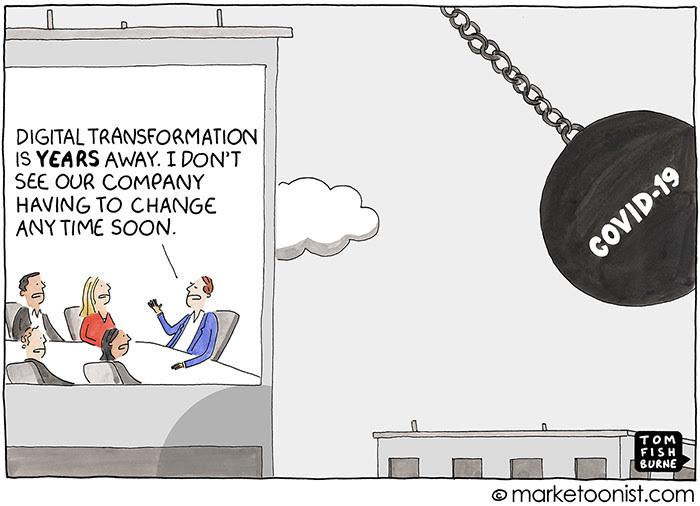Animation is no longer just the realm of Saturday morning cartoons or high-budget Hollywood films. It’s become a powerful tool for businesses, allowing them to communicate complex ideas in a visually engaging and easily digestible format. Whether you’re launching a new product, explaining a service, or building brand awareness, animated videos can captivate your audience and drive them to action in ways traditional media often can’t.
In this blog, we’re diving deep into crafting compelling storylines for animated business videos. We’ll give you valuable insights, ensuring you have a roadmap to create animations that not only look great but also deliver your message effectively. We hope that by reading this you’ll better understand how to harness the power of storytelling in animation to connect with your audience on a deeper level and achieve your business goals.
Importance of storytelling in animated videos
Let’s face it, the internet is saturated with content. One way to make an impact and cut through the noise however is by using effective storytelling at the heart of your content. Why is storytelling so crucial for animated business videos you ask? Because stories are what make us human—they’re how we connect, learn, and understand the world around us. In business, storytelling can transform abstract ideas into relatable narratives that engage, inspire, and drive action.
A well-crafted storyline in an animated video does more than entertain; it captivates the audience, making complex concepts easier to grasp and remember. With a strong storyline, you can guide viewers through a narrative journey, building emotional connections and fostering trust. This connection is what drives engagement and retention. When your audience feels invested in the story, they’re more likely to watch the entire video, share it with others, and most importantly, take the desired action—whether that’s signing up for a service, purchasing a product, or spreading the word about your brand. Let’s look at a few examples of successful animated business videos that harnessed the power of storytelling.
Cisco Healthcare hero video
This video illustrates how Cisco’s technology solutions can transform the healthcare industry. The video captures the essence of what it means to be a healthcare hero in today’s world. It effectively highlights Cisco’s mission to create a more connected, secure, and equitable healthcare system.
Slack – Work, Simplified
The “Work, Simplified” video by Slack uses vibrant 2D animation to illustrate how the platform streamlines communication in chaotic work environments, transforming them into organised and efficient workplaces. Through visual storytelling, the video effectively highlights Slack’s unique selling proposition of reducing workplace chaos by organising conversations and integrating tools in one place.
Mastercard in a Minute
The Mastercard animated video effectively showcases the company’s role as a leading technology provider in the payment industry, emphasising how its innovations add value to consumers, businesses, and financial institutions worldwide. Through a combination of clean visuals and engaging storytelling, the video illustrates Mastercard’s mission to connect people, businesses, and governments in the digital economy.
Tips for creating a story-driven animated business video
1. Define your objective
When embarking on the journey of creating an animated video, the first and most crucial step is defining your objective. A well-defined objective not only guides the storytelling process but also ensures that every aspect of the video aligns with your business goals. To effectively define your objective, consider the following questions:
What is the purpose of your video?
Are you introducing a new product or service?
If your goal is to introduce a new product or service, focus on highlighting its unique features and benefits. How does it solve a problem for your audience? What makes it stand out from the competition?
Are you aiming to build brand awareness?
If the objective is to build brand awareness, consider how your video can convey your brand’s values and personality. What story can you tell that reflects your brand identity and resonates with your target audience?
Are you looking to drive conversions or sales?
For videos aimed at driving conversions or sales, identify the specific actions you want your viewers to take. How can your story encourage viewers to engage with your brand, whether it’s signing up for a newsletter, making a purchase, or sharing your content?
Who is your target audience?
Who are you trying to reach with your video?
Understanding your audience is key to defining your objective. Are you targeting existing customers, potential leads, or a new market segment? Tailor your message to speak directly to the needs and interests of your audience.
What are the demographics and psychographics of your audience?
Consider factors such as age, gender, location, interests, and behaviours. How can you craft a message that resonates with these characteristics?Your animation should be a natural extension of your brand’s visual identity. If your brand is known for being cutting-edge and innovative, a futuristic 3D animation might be the perfect fit. On the other hand, if your brand is more about simplicity and approachability, a clean 2D animation or even a friendly whiteboard animation might be more appropriate. Whatever you choose, make sure it aligns with the colours, tone, and overall feel of your brand.
What message do you want to convey?
What is the core message of your video?
Identify the main idea or theme you want to communicate. Is it the superiority of your
product, the values of your brand, or the unique benefits you offer?
How can you ensure your message is clear and concise?
Consider how to distil complex ideas into simple, digestible content that your audience can
easily understand and remember.
What are the Key Performance Indicators (KPIs)?
How will you measure the success of your video?
Define the metrics you will use to evaluate the effectiveness of your video. Are you tracking views, engagement rates, conversion rates, or something else?
What benchmarks will you use to determine if your objective is met?
Establish clear benchmarks for success. What results are you aiming for, and how will you know if you’ve achieved them?
How does this video fit into your broader Marketing Strategy?
What role does this video play in your overall marketing strategy?
Consider how your video complements your other marketing efforts. Is it part of a larger campaign, or does it stand alone?
How can your video content be repurposed or integrated across different platforms?Think about how your video can be used across various channels, such as social media, email marketing, or your website, to maximise its impact.
By carefully considering these questions, you can define a clear and focused objective for your animated video. This clarity will guide every decision you make throughout the production process, from scriptwriting and storyboarding to animation and distribution.
2. Craft a compelling story
Creating an engaging and memorable animated video hinges on a strong storyline. A compelling narrative serves as the backbone of your animation, guiding viewers through an emotional journey that resonates with them and drives them to take action. Here’s how to craft a story that captivates your audience:
Start with a clear structure
A well-structured story provides a solid foundation for your animation. Make sure your narrative has a clear beginning, middle, and end. Each part of the story should serve a distinct purpose:
- Beginning: Set the stage by introducing the main characters and the context of the story. Clearly define the protagonist and the situation they find themselves in. This helps to establish the world of the story and piques the viewer’s interest. Ask yourself: What is the inciting incident that sets the story in motion?
- Middle: Develop the plot by introducing conflict or challenges that the characters must overcome. This is where you build tension and keep the audience engaged. Consider incorporating twists and turns that make the narrative unpredictable and exciting. Think about: How do the characters grow or change in response to these challenges?
- End: Resolve the conflict and bring the story to a satisfying conclusion. Provide closure to the audience by showing how the characters have changed or what lessons they have learned. Reflect on: What message or call-to-action do you want to leave your audience with?
Create relatable characters
Characters are the heart of your story. Develop characters that your audience can relate to and care about. To make them more relatable:
- Depth and Dimension: Give your characters depth by providing them with backstories, motivations, and personalities. What are their strengths and weaknesses? How do these traits influence their decisions and actions throughout the story?
- Emotional Connection: Use empathy to connect your characters with the audience. What struggles or desires do your characters have that your viewers can identify with? Characters who display vulnerability and growth can create a stronger emotional connection with the audience.
Incorporate conflict and resolution
Conflict is essential for creating drama and tension in your story. It drives the narrative forward and keeps viewers invested in the outcome. Consider these elements:
- Types of Conflict: Decide on the type of conflict that will best suit your story—internal (character vs. self), external (character vs. character, society, or nature), or both. Each type can add layers of complexity to your narrative.
- Resolution: Ensure that the resolution of the conflict aligns with your story’s message or theme. How is the conflict resolved, and what does it reveal about your characters or the world they inhabit?
Evoke emotion
Emotion is a powerful tool in storytelling. A narrative that evokes emotion can leave a lasting impact on your audience. To achieve this:
- Use Emotional Triggers: Identify key moments in your story where you can evoke emotions such as joy, sadness, excitement, or fear. How can you use visual and auditory elements to amplify these emotions?
- Drive Action: Connect emotion to action by inspiring viewers to take a specific action after watching your video. Whether it’s purchasing a product, sharing the video, or signing up for a service, the emotional journey should lead to a clear call to action.
Make the story memorable
A memorable story is one that stays with your audience long after they’ve watched the video. To make your story stand out:
- Originality: Bring a fresh perspective or unique angle to your narrative. How can you differentiate your story from others in the same genre or industry?
- Visual and Auditory Elements: Enhance your story with striking visuals and sound. What colours, animations, and sound effects will best convey your message and resonate with your audience?
By focusing on these storytelling elements, you can craft a narrative that is both relatable and memorable. This approach will not only captivate your audience but also drive them to engage with your brand and take meaningful action.
3. Choose the Right Animation Style
Selecting the right animation style is a crucial step in creating an effective animated video. The style you choose should not only complement your brand identity but also enhance your storytelling by visually communicating your message in a way that resonates with your audience. Here’s how to ensure your animation style aligns with your goals:
Consider your brand identity
Your animation style should reflect your brand’s personality and values. This consistency helps maintain brand recognition and trust. Here are some questions and insights to guide you:
What is your brand’s personality?
Consider whether your brand is playful, sophisticated, innovative, or traditional. Choose an animation style that mirrors this personality. For example, a fun and vibrant 2D animation might be ideal for a youthful, energetic brand, while a sleek and realistic 3D animation could suit a brand that emphasises innovation and technology.
What colors and visual elements define your brand?
Ensure that the colour palette and visual elements of the animation match your brand’s visual identity. Consistency in design elements helps reinforce brand recognition and makes the video instantly recognisable as yours.
Align with your message and audience
The animation style you select should enhance your storytelling and appeal to your target audience. Consider the following:
What story are you telling?
Different animation styles convey different emotions and themes. For a heartfelt, emotional story, a 2D animation with hand-drawn elements might create the right atmosphere. For a technical or futuristic narrative, 3D animations or motion graphics might better convey your message.
Who is your target audience?
Think about the preferences and expectations of your audience. Younger audiences may respond well to bold, colourful animations, while a corporate audience might prefer more polished, professional visuals. Understanding your audience will help you choose a style that engages and resonates with them.
Evaluate different animation styles
Explore the different types of animation styles to determine which best suits your project:
- 2D Animation: Known for its classic, cartoon-like appearance, 2D animation is versatile and can range from simple to complex designs. It’s often used for storytelling that requires a personal, relatable touch. Consider this style if you want to create a whimsical or nostalgic feel.
- 3D Animation: Offers a realistic and immersive experience, making it ideal for technical demonstrations or lifelike character animations. If your story benefits from a sense of depth and realism, 3D animation might be the way to go.
- Motion Graphics: Focuses on animated graphic design elements and is perfect for explaining complex ideas or presenting data in an engaging way. Motion graphics are highly effective for corporate videos, educational content, and advertisements that need to convey information quickly and clearly.
- Stop Motion: This unique style involves physically manipulating objects frame by frame. While more labour-intensive, stop motion can create a charming, tactile aesthetic that stands out. Use this style if your brand values craftsmanship and creativity.
Maintain consistency with your brand
Once you’ve chosen an animation style, ensure that it remains consistent throughout the video and aligns with your overall brand strategy. Consistency reinforces your brand identity and makes your video more cohesive and professional.
How does the style fit within your overall Brand Strategy?
Make sure the animation style aligns with your long-term brand strategy and complements other marketing materials. Consistent visual identity across all platforms enhances brand recognition and trust. By carefully considering your brand identity, message, audience, and animation style, you can create a visually compelling video that effectively communicates your story and strengthens your brand. The right animation style can make your video more engaging, memorable, and impactful, ultimately driving the desired action from your viewers.
Try Shootsta for your next animated video
Ready to transform your storytelling with powerful, engaging animations? Shootsta partners with companies like yours to create content that captivates and converts. You can produce high-quality animations tailored to your brand’s unique needs without the usual complexities.
Get in touch with us today and discover how you can bring your stories to life in ways that truly resonate with your audience.


